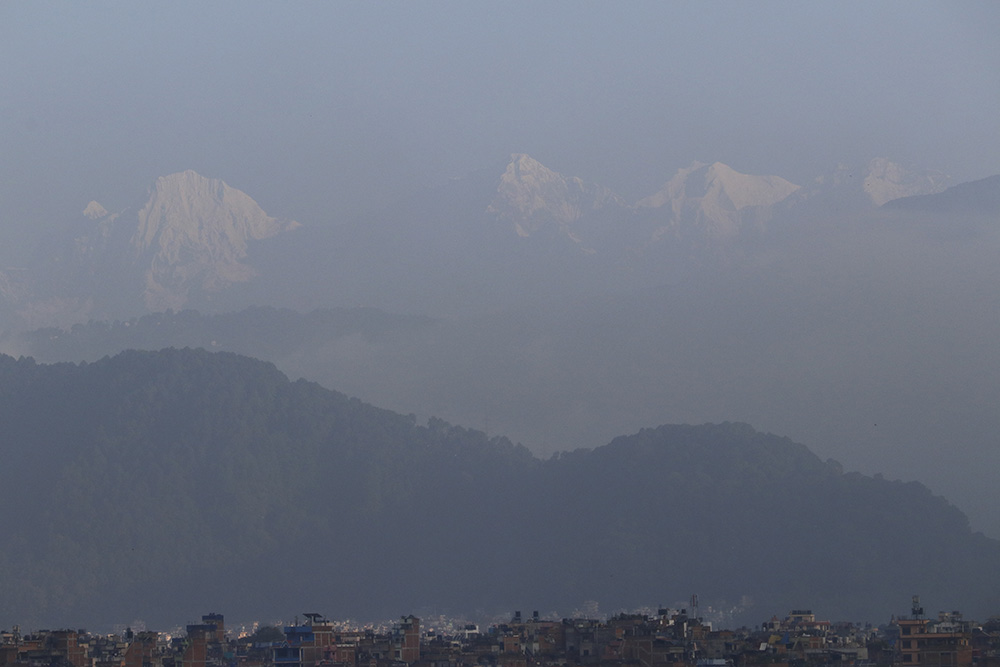I suppose – without thinking about it properly – I was slightly envious of the view my brother had from his tiny bedroom. I’m not sure he ever did, but he could look north from his window across a rambling grey mess of suburbs and then beyond to central London. It wasn’t a pretty view but he could see out. I always have a hankering to see out.
Now from my desk, or from the roof terrace or the plinth supporting our five big black water tanks, I can see most of the lovely folded green hills that form the rim of The Valley. The highest undulations rise a little over 2000m, that’s 600m or so from the valley floor. To the north, on a clear morning, the eternal snows of Ganesh and Langtang himals and Dorje Lakpa are sometimes visible depending on how the clouds cling onto the foothills.
From Kathmandu the Himalayas can seem diaphanous. Some mornings there’s the merest suggestion of snow in the clouds; sometimes the mountains look hard sharp and solid, then there is a change in the light or mist moves in and they fade away as if the whole view was in the imagination.
Foreigners like me love to identify and label the Himalayan peaks they see but Nepalis don’t feel the need. The mountains are always there. Why are names important?
Here peoples’ names too are given less emphasis than relationships. There is a whole relative-specific vocabulary: not just sister-in-law but husband’s oldest sister or wife’s youngest brother. Not just aunt but older brother’s child. Children are often known as eldest boy-child, third or youngest girl-child, which gets confusing when another baby arrives. Family is important.
Last night we had dinner with a successful local businessman and we got talking about relationships. I spoke about how I first met the man who is now my husband in Kathmandu and our Nepali friend commented on the romantic attachments people have for Nepal, and indeed places where we live while studying. Naturally, we asked how he and his wife had met. He smiled as he told us his had been an arranged marriage. Their two families knew each other well and introductions were made. It was a modern arrangement though. The couple courted for a whole year before the wedding ceremony and they are clearly still very happy. They have two daughters aged eight and fifteen and their father effuses enormous warmth for his family. Already he seems slightly sad that they’ll have to go abroad to study.
Nepalis have always been great travellers. In previous generations people from the Middle Hills would walk – sometimes for days or even weeks – to shop or attend a clinic. Many travelled far to find work.
There are roads now but this tendency to travel continues. Within Nepal, work opportunities are limited or offer very low pay so people move abroad to work as well as to study. These days perhaps a third of the population live abroad – in India, the Middle East, SE Asia, Europe and the US. Nepal’s current population is around 30 million, and an estimated 10 million live overseas long term. The Dasain festival is over and Tihar is about to start and it has been pure joy to see families reunited as all these expats have returned home to their families to feast and reminisce and adorn loved ones’ foreheads with tikkas made of yoghurt, rice and vermillion.
 |
| Mountains of the Ganesh himal range and the Queens Forest from the southern Kathmandu Valley |
The first of my blogs posted since my return to Nepal in mid September is here:
Waiting to fly